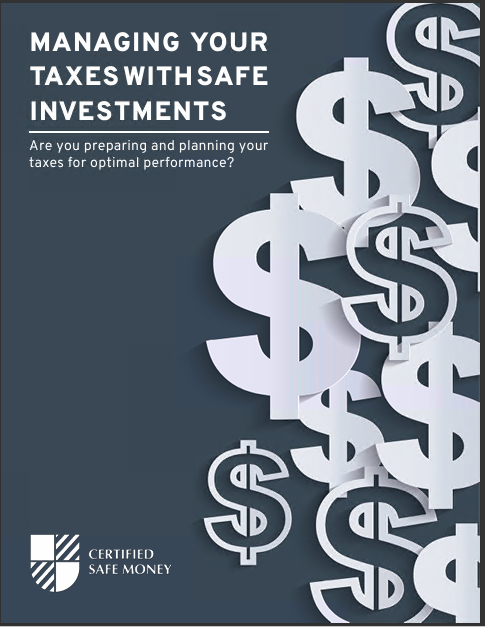Key Takeaways
-
Whole life insurance offers lifelong coverage with fixed premiums, guaranteed cash value, and dividends.
-
Universal life insurance provides more flexibility in premiums and death benefits but requires careful monitoring to avoid policy lapses.
Whole Life Insurance: Lifetime Coverage with Guaranteed Growth
When you’re thinking about long-term financial security, whole life insurance often comes up as a reliable option. It’s a permanent life insurance policy, which means it covers you for your entire life as long as premiums are paid. Here’s how whole life insurance works:
Steady and Predictable Premiums
One major advantage of whole life insurance is that your premiums remain fixed. When you sign up, you’ll know exactly what you’ll be paying annually, monthly, or quarterly, and this amount never changes. If predictability is essential to your budgeting strategy, whole life insurance offers significant peace of mind.
Guaranteed Cash Value Accumulation
Whole life insurance policies build cash value at a guaranteed rate. Over the years, as you pay premiums, a portion of your money accumulates into a cash value account within the policy. This cash can later be borrowed against or even withdrawn in specific scenarios, providing a safety net or emergency fund if needed.
Dividend Potential
While not guaranteed, many whole life policies pay dividends annually. Dividends are like bonuses that insurance companies distribute to policyholders when the company performs well financially. You can use dividends to buy additional coverage, reduce future premiums, or even take them as cash payments.
Universal Life Insurance: Flexibility with Responsibility
Universal life insurance is another permanent insurance option, but it differs significantly from whole life insurance in several ways. This type of policy offers flexibility but also requires active management. Here’s a breakdown of universal life:
Adjustable Premiums and Death Benefits
The hallmark of universal life insurance is flexibility. You can adjust your premium payments, paying more or less depending on your financial situation. Similarly, you can also modify the death benefit, increasing or decreasing coverage based on your evolving needs.
Interest-Based Cash Value
Unlike whole life, universal life’s cash value accumulation is dependent on current interest rates. While this means you might benefit from higher returns during good economic times, lower rates could slow your cash value growth considerably. It’s important to understand that the cash value is not guaranteed at a fixed rate and may fluctuate.
Active Management is Required
Universal life insurance is not a “set it and forget it” policy. Due to the adjustable nature of premiums and cash values dependent on interest rates, you must periodically review your policy to ensure it remains adequately funded. Failing to do so could cause your policy to lapse unexpectedly if the cash value becomes insufficient to cover the policy’s costs.
Critical Differences Between Whole Life and Universal Life
Now that you’ve got a basic idea of each policy type, let’s highlight the critical differences to keep in mind when choosing between the two:
Premium Predictability vs. Flexibility
-
Whole Life: Fixed premiums provide stability and easy budgeting.
-
Universal Life: Variable premiums allow you to adapt to changes in your financial circumstances.
Cash Value Guarantees vs. Potential Growth
-
Whole Life: Offers guaranteed, stable cash value growth.
-
Universal Life: Cash value growth depends on interest rates, potentially offering higher returns but also greater risks.
Policy Management and Maintenance
-
Whole Life: Minimal management required; premiums and benefits remain constant.
-
Universal Life: Requires regular monitoring and possible adjustments to maintain adequate coverage.
How to Decide Which Policy Is Right for You
Choosing between whole life and universal life insurance isn’t straightforward—it depends heavily on your financial goals, risk tolerance, and willingness to manage your policy actively.
Consider Whole Life if You:
-
Prefer financial stability and predictability.
-
Desire guaranteed cash value growth.
-
Want minimal involvement once the policy is set up.
Consider Universal Life if You:
-
Anticipate your financial situation changing significantly.
-
Are comfortable managing your policy actively.
-
Seek potential higher cash value returns in favorable economic conditions.
Key Factors to Consider Before Buying
When you’re preparing to invest in either of these insurance products, keep these important factors in mind:
Long-Term Financial Objectives
Are you looking for guaranteed growth, or are you willing to take on some risk for potentially higher returns? Identifying your risk tolerance and financial goals early will guide your decision effectively.
Budget and Cash Flow
Assessing your current budget and expected financial changes is essential. Whole life requires consistent premiums, while universal life might offer breathing room during financially tight periods.
Policy Cost Over Time
Whole life policies typically have higher initial premiums compared to universal life policies. However, universal life costs can increase substantially later if your cash value doesn’t grow as anticipated.
Your Involvement in Managing the Policy
Consider how much time and effort you’re willing to invest in managing your policy. If you’re not inclined towards active management, universal life insurance could become burdensome.
Avoiding Common Pitfalls
To prevent any unwanted surprises down the road, be aware of these common pitfalls:
-
Neglecting to Monitor Universal Life Policies: Regular check-ins are essential to ensure your universal life policy stays adequately funded.
-
Misunderstanding Cash Value: Recognize the difference between guaranteed growth in whole life and interest-sensitive growth in universal life.
-
Ignoring Long-Term Costs: Evaluate not just the initial premiums but also future cost scenarios, particularly with universal life.
Making Your Choice: A Strategic Decision
Ultimately, the decision between whole life and universal life insurance should align with your long-term financial strategies, comfort with risk, and willingness to engage with your policy actively. Take ample time to compare both options thoroughly, assessing how each aligns with your future financial plans and lifestyle preferences.
Before committing, review hypothetical scenarios—such as low-interest-rate environments for universal life or dividend fluctuations for whole life—to understand how each policy type performs under various conditions.
Smart Planning for Your Financial Future
Choosing the right life insurance policy can dramatically impact your financial security and legacy. Whole life and universal life insurance both have their strengths and potential drawbacks. Your choice should reflect your personal financial style and future objectives.
Review your decision periodically to ensure your policy remains aligned with your goals, especially after major life changes such as marriage, the birth of a child, career changes, or retirement planning milestones.
Your financial future deserves careful planning and attention—don’t rush the decision, and make sure your policy matches your long-term goals and financial comfort.
Understanding Your Best Options
Selecting between whole life and universal life insurance isn’t merely a financial decision—it’s also about peace of mind. Take control by clearly understanding your policy choice, its implications, and how it fits into your financial landscape. Whether opting for guaranteed stability or seeking flexibility and potentially higher rewards, the decision will shape your financial security for decades to come.











